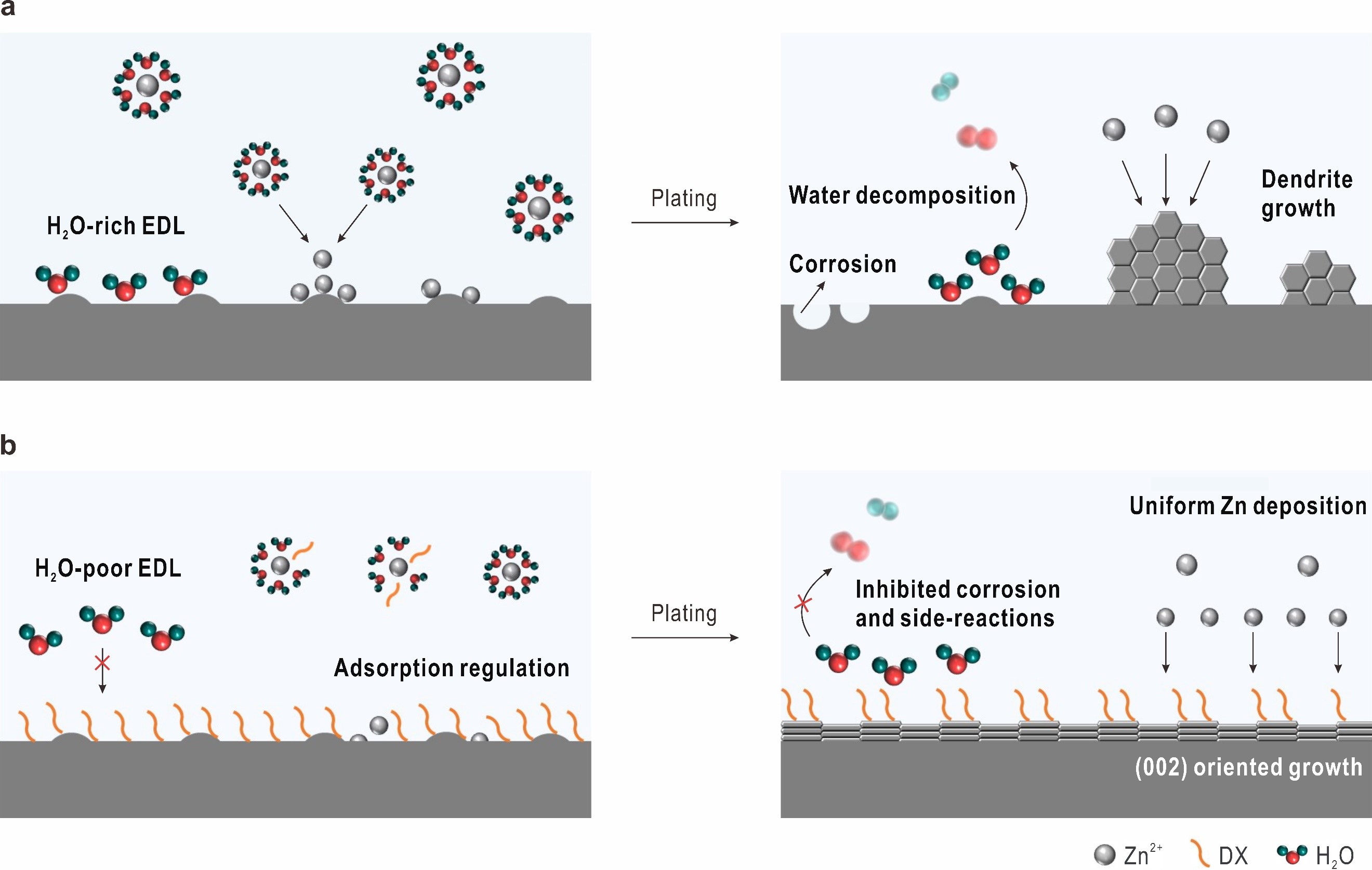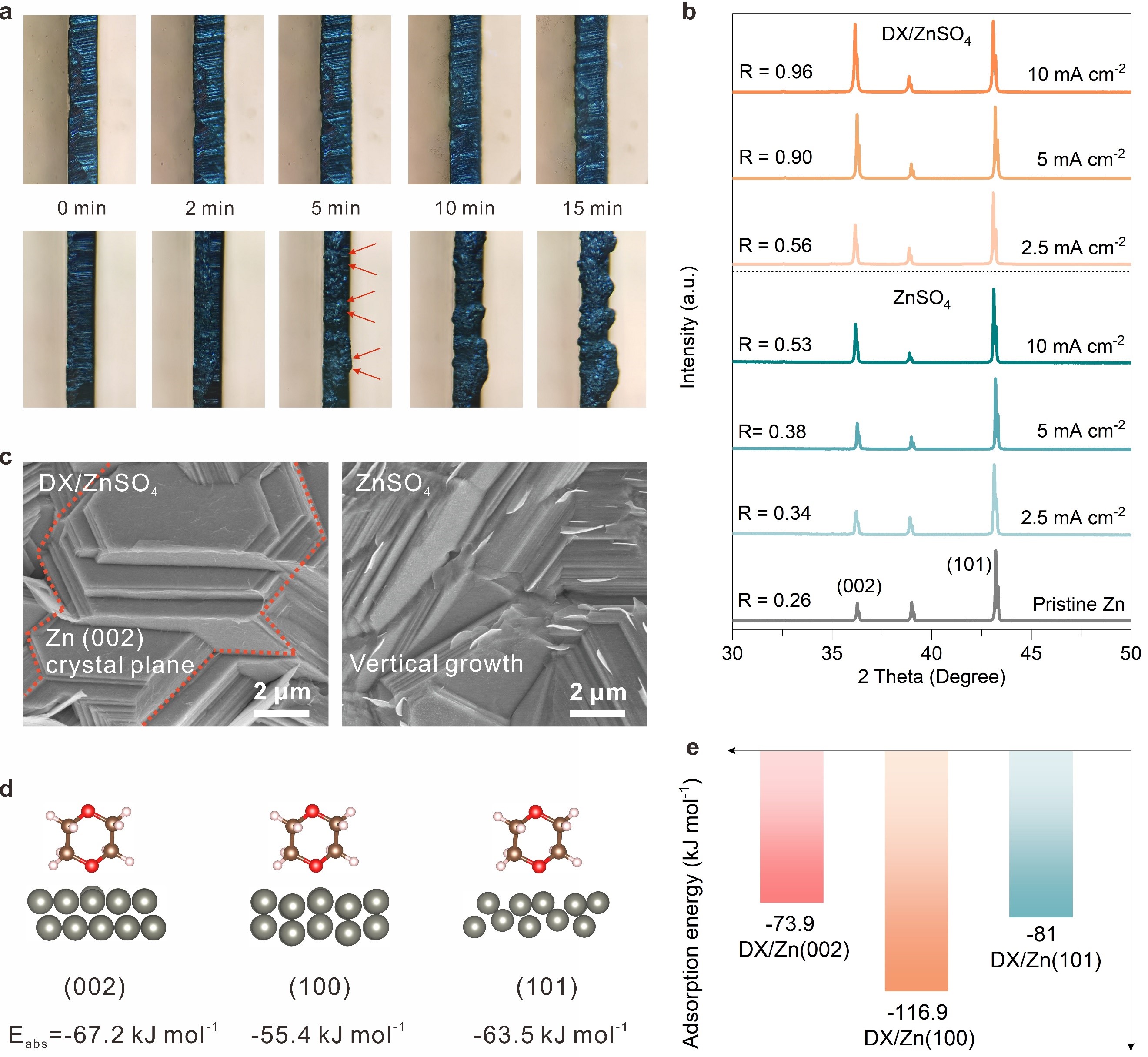
According to research published in international journal of ACS Nano recently, a team led by Dr. LI Zhaoqian. from Hefei Institutes of Physical Science (HFIPS), Chinese Academy of Science (CAS) found that the addition of 1,4-dioxane (DX) molecules in the electrolyte of aqueous zinc ion battery would lead to the preferred Zn (002) texture growth, which effectively suppressed the Zn dendrite growth and improved the reversibility and cycling stability of batteries.
Aqueous rechargeable zinc-ion batteries (ZIBs) are an emerging sustainable system for the next generation of grid-scale energy storage technology. However, the implementation of this technology has been plagued by the serious dendrite issue and poor reversibility of Zn anode. In hexagonal close-packed Zn crystal, (002) facet possesses the lowest surface energy and the slowest growth rate rendering a surface-reaction-controlled deposition process, and thus mitigating the rampant Zn2+ flux and side-reactions. Therefore, inducing preferred Zn (002) texture can effectively alleviate the dendrite growth and the formation of side-reactions.
In this study, researchers constructed an advanced electrolyte modulating strategy to adjust the anode/electrolyte interface. In this new system, the adsorption of 1,4-Dioxane (DX) on the Zn surface can induce Zn (002) texture growth and suppress the detrimental side-reactions.
The performance of the new system was validated in later experiments. Battery with the addition of DX demonstrated a long-term cycling stability of 1000 h, even at harsh condition of 10 mA cm-2 with an ultrahigh cumulative plated capacity of 5 Ah cm-2. The battery also showed a high reversibility with average coulombic efficiency of 99.7%.
"The Zn//NH4V4O10 full cell with DX realized high specific capacity and capacity retention," said Dr. LI Zhaoqian, "It's much better than ZIBs with pristine ZnSO4 electrolyte."
This study selectively adjusted the deposition rate of Zn2+ on the crystal plane by adsorbing molecules, which provided a promising strategy for modulating high performance zinc anodes at the molecular level, and was expected to be applied to other metal anodes with poor stability and reversibility.
The research was supported by the HFIPS Director's Fund.

The schematic diagrams for Zn deposition cycled in different electrolytes. (a) bare ZnSO4 electrolyte; (b) DX/ZnSO4 electrolyte. (Image by LI Zhaoqian)

(a) The in-situ optical microscopic comparison of the deposited Zn anode surface in the ZnSO4 electrolyte and DX/ZnSO4 electrolyte. (b, c) The XRD patterns and SEM images show the (002) texture in the DX/ZnSO4 electrolyte. (d, e) The adsorption energy comparison. (Image by LI Zhaoqian)